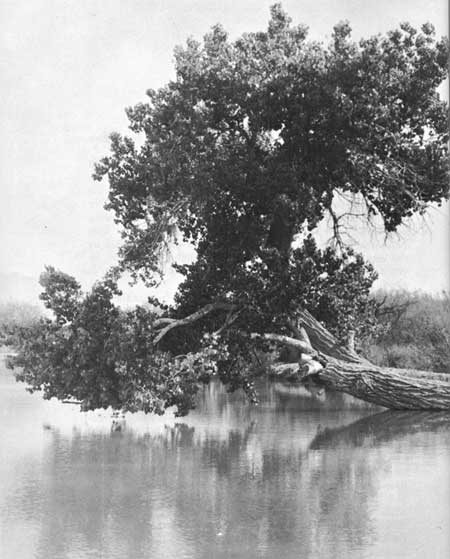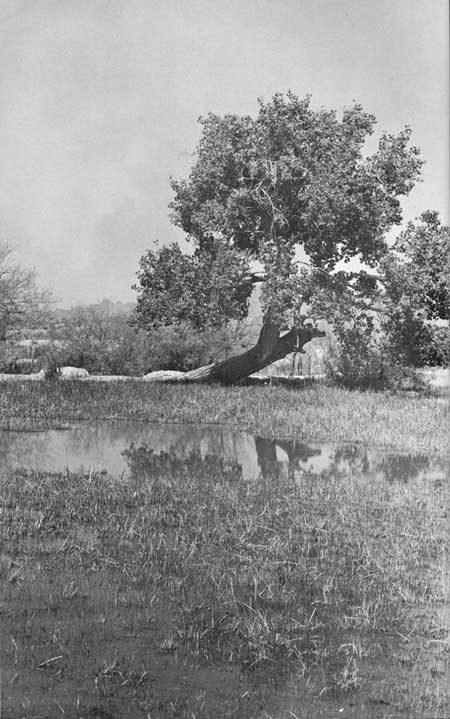|
ORGAN PIPE CACTUS National Monument |
 |
Wet Habitats
IN AN ARID REGION, the few permanent springs, seeps, and natural tanks, or tinajas (potholes), provide oases where you will find species requiring an abundance of water, complete strangers to a desert environment. Also in these spots, some of the usual desert forms become unnaturally rank and luxuriant, and they show other interesting changes when their bases are in water. Desert waterholes thus present a special field for study.
 The pond at Quitobaquito. |
Only a dozen or so such water sources occur in the monument, the largest being a shallow pond, the accumulation from warm springs, at Quitobaquito near the southwestern corner of the area. Here a number of trees have become established, birds are abundant, and a border of shrubs, inland saltgrass, flat-sedge, and Olney bulrush presents a picture quite unlike that of the desert surroundings. A large, leaning cottonwood shades the west side of the small pond and provides a choice of perches for vermilion flycatchers which sally forth at intervals to snap up insects hovering over the water. Plants that grow in the water monopolize the shoreline, furnishing cover for coots, wild ducks, and other waterfowl that make rest stops at this tiny oasis during migrations. Seepwillow baccharis, tree tobacco, and arrowweed pluchea thrive in the water-soaked soil around the shores. The big saltbush and pickleweed, or iodine-bush, found at Quitobaquito represent species not known to occur elsewhere within 100 miles.
A small stand of cattails has taken possession at Rincon Spring, about 1-1/2 miles northwest of Quitobaquito. At Dripping Springs and near seeps and ephemeral streams in the Ajo Mountains are verdant growths of small, moisture-loving plants. Among these, the crimson monkeyflower attracts hummingbirds with its bright blossoms from March to October.


|

|
| NPS History | History & Culture | National Park Service | Contact |
|
Last Modified: Sat, Nov 4 2006 10:00:00 pm PST |


